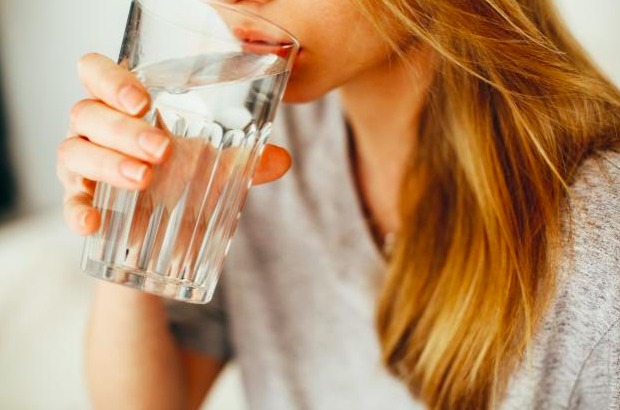Focusing on healthier drinking habits can be a common goal – but cutting back is easier said than done when alcohol has become part of your daily or weekly lifestyle or is something you use to cope with life’s challenges.
Maybe you’ve experienced negative health effects because of your drinking, or it’s interfering with your interpersonal relationships and ability to function in everyday life. Maybe you just want to start the next stage of your life with a more focused, healthier you. Either way, here are some tips for cutting back gradually.
1. Set a goal
Start by writing down some current stats: How many days per week you drink, how many drinks you have, and – if some of those drinks are extra large – how many servings of alcohol you have in that time frame.
Set an easy goal to start with. One less drink per week or day is a great place to start. You can even offer yourself a non-alcoholic reward for each day or week you meet your goal.
2. Measure drinks
You may think to yourself, “I only have one drink at the end of each day,” but consider the size of your drink. One serving of alcohol is: one can of beer; 9 fluid ounces of malt liquor (a stronger lager or ale), 5 ounces of wine, or a 1.5-fluid-ounce shot of hard liquor like gin, vodka, or tequila.
If cutting down your number of drinks sounds too difficult at the start, first make sure that each drink is truly just one drink by measuring your alcohol.
3. Make your drinks smaller
If daily drinks are your go-to and less frequency seems daunting, try cutting down even more. Try a half serving of alcohol or even just a few sips at a time. Make a mixed drink with half a shot of hard liquor instead of a full-sized shot. Savor a few sips of wine like you’re a sommelier.
4. Drink lots of water
Drink a glass of water before an alcoholic drink, and alternate each alcoholic drink with a non-alcoholic one. Staying hydrated will help your body process the alcohol, and your stomach will fill up more quickly, naturally limiting the amount of alcohol you can drink in one sitting.
5. Eat while drinking
Similarly, eating before drinking can reduce alcohol cravings, fill your stomach with something other than alcohol, and slow the speed at which you become impaired. If you find yourself always craving alcohol at a certain time of day, time your meal then. Savor your food, enjoy your favorite TV show, and see if the cravings pass.
6. Set a budget
Set a monthly or weekly budget for alcohol based on your servings goal or a financial goal, and stick to it. One technique for sticking to this budget is to buy a gift card at the beginning of the week or month to your go-to liquor store; when the gift card is gone, you’ve reached your limit until you buy your next gift card.
Each time you meet your budget goal, treat yourself to a reward with some of the money you’ve saved.
7. Count your drinks
Sometimes, simply realizing the number of drinks you’re having regularly can be a wake-up call. Start keeping a tally as you drink. When you’re impaired, you may not realize how quickly you’re getting to three, or five, or more drinks.
If you’re shocked by your number, try reducing it by one at a time. Before you start drinking, measure out your goal number of drinks, and then hide the rest of the alcohol. When you’ve finished what you set out, you’re done drinking.
8. Drink-free day(s)
Another solution if frequency is your issue is to start with a drink-free day each week. Maintain that for a month (longer if you’re really struggling), then reduce your weekly drinking days by one more the following month.
9. Avoid triggers
Often, the situations in which you typically drink become triggers to drink. Start eliminating these situations from your life. If you often drink with a certain group of people, start seeing them individually, in a different setting, or not at all. If it’s a place that’s your trigger, it’s best to avoid it altogether. If it’s a certain time of day, try eating a meal and/or planning a fun activity for that time of day as a distraction.
10. Be able to say “no”
You probably won’t be able to altogether avoid situations where others are drinking. Whether it’s friends, coworkers, or a server at a restaurant or party, be able to say “no, thank you.” If you’re worried about the social pressure to drink, practice what you’ll say before heading into a situation where others are likely to be drinking. Be confident in your decision; your health is most important.
Benefits of cutting back on alcohol consumption
You can start to feel the benefits of cutting back immediately. Here are some short term effects you can look forward to:
● Feeling better in the morning
● Being less tired during the day
● Better looking skin
● Easier weight management
Long term benefits include:
● Better sleep
● Stronger immune system
● Healthy heart
● Better judgment
● Better interpersonal relationships, if drinking was affecting your behavior toward others
● Stable mood (alcohol is associated with mood swings, depression, and anxiety)
If you find that you can’t cut down, you may need help to quit drinking. If you have developed an alcohol use disorder, drinking may no longer feel like a choice. Never try to stop drinking cold turkey if you drink large quantities regularly; the effects of alcohol withdrawal can be fatal. If you find yourself at this point, it’s best to seek professional help.
If you or a loved one is struggling with alcohol use, contact the Substance Abuse and Mental Health Services Administration National Helpline at 1-800-662-4357 to get support and local resources. Make the Call.

![Partners [Logo Reversed]](https://poweredbypartners.org/wp-content/uploads/2020/06/partners-horiz-no-tag-sm-rgb-color-purple.png)